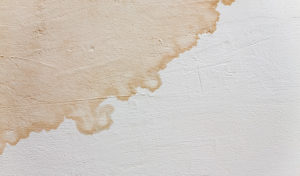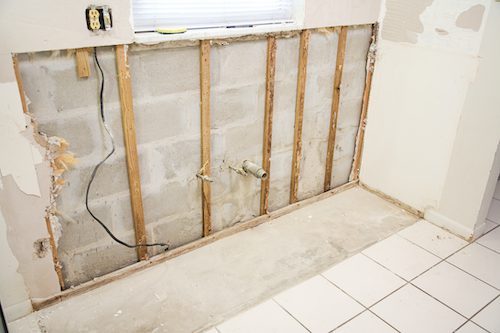Spotting and Solving Stains from Water on Wall Surfaces
Spotting and Solving Stains from Water on Wall Surfaces
Blog Article
What're your insights and beliefs about Water Stains on Walls?

Water stains on walls are not pleasurable to the eyes. Your home must lack stains on the walls, roofing, or floorings. That is the perfect state of a residence and its frameworks. Yet, occasionally it appears practically unpreventable to experience water discolorations on walls in residences.
House owners living in moist regions continuously deal with the fear of water spots on walls. With accurate and all-round information on the reasons of water spots and punctual fixing procedures, you will constantly be a step in advance of such events.
3 Common Causes of Water Spots on Wall Surfaces
Contrary to common belief, water stains on walls do not constantly come from poor building materials. There are a number of reasons for water stains on walls. These consist of:
Poor Drain
This will avoid water from seeping right into the wall surfaces. This web links to excessive dampness that you see on the wall surfaces of your building.
The leading cause of damp walls, in this situation, can be an inadequate drainage system. It can also be due to inadequate monitoring of sewer pipelines that run through the structure.
Damp
When warm moist air consults with completely dry cool air, it causes water droplets to form on the walls of buildings. This takes place in washrooms and cooking areas when there is vapor from food preparation or showers. The water droplets can stain the surrounding walls in these parts of your home as well as infect other locations.
Damp or condensation impacts the roof covering as well as walls of buildings. When the wall surface is wet, it creates an ideal environment for the growth of fungis and microorganisms.
Pipe Leaks
Many homes have a network of water pipes within the wall surfaces. It always boosts the practicality of such pipes, as there is little oxygen within the walls.
Yet, a drawback to this is that water leak impacts the walls of the structure and also causes prevalent damages. An indicator of defective pipelines is the appearance of a water stain on the wall surface.
Water Discolorations on Wall Surface: Fixing Tips
When dealing with water discolorations, homeowners would normally desire a fast repair. Yet, they would quickly understand this is disadvantageous as the water stains reoccur. So, right here are a couple of valuable pointers that will certainly assist you in the fixing of water stains on walls:
Pro Pointer
A houseplant in your home also enhances its humidity. So, if your house is already humid, you might want to present houseplants with marginal transpiration. An instance of suitable houseplants is succulents.
Conclusion
Although no person intends to have water stains on walls in their home, it can take place to the most effective of us. This article gives you leverage, as you now know exactly how to handle this problem if it does occur.
It is constantly best to hire expert services to assist take care of the problems in your house.
In some cases it seems almost inescapable to experience water stains on walls in homes.
In contrast to prominent idea, water spots on walls do not constantly stem from inadequate structure materials. There are a number of causes of water discolorations on walls. The water droplets can tarnish the surrounding wall surfaces in these parts of your residence and also spread to other areas.
Below are a few valuable ideas that will certainly guide you in the repair of water stains on wall surfaces:
CHECKING FOR WATER DAMAGE
Water damage can be costly, and it may begin before you even notice the first signs of trouble. Water damage can cause mold and mildew in your walls and floors, which can create an abundance of health concerns for your family. It can also lead to costly repairs of various appliances and general home fixtures. To avoid the pricey consequences of water damage, here are Warner Service’s top 5 places you should check:
The walls – The easiest place to spot the beginnings of water damage is on the walls and ceilings of your home. If water damage is present, there will most likely be water stains, especially around the windows and doorframes, and/or cracks in the drywall. If a stain looks unusual (discolored to brown, black or gray, raised texture), has a swollen appearance or is soft to the touch, contact a professional immediately. The pipes – To avoid water damage, consistently check the pipes in your kitchen (especially the dishwasher and ice maker), bathrooms, laundry room (specifically washing machines) and basement for corrosion, leaks and water stains. Pay special attention to where the pipes connect in your home and the location of caulking around the bathroom fixtures, including toilets, sinks, showers and tubs. Missing or loose caulking and grout could be signs of leaking water. This seepage can also quickly cause mold and rust, so double check your water heater and tank for wet spots on the floor. The floor – Water damage is very easy to spot on the floor. Look for any warping or buckling of the material, especially in the basement. If your home has wood flooring, look for bright white or dark stains. If your home has carpeting, keep it dry and clean. A damp carpet that smells of mold could cause water damage and health problems. To avoid this, consider installing floor pans under your appliances to help prevent damages from small, slow and undetected leaks. The basement and attic – If your basement or attic smells odd check for mold and mildew around the area, especially the valley where the roof meets. While you are inspecting those areas, check for wall cracks, floor stains, rust and dampness in the insulation. If you live in a colder and/or rainier climate, perform routine checks for water damage from melting snow or ice and rain. The exterior – Check the roof for damaged flashing and missing, cracked or curled shingles. There should also be no standing water anywhere outside your home. This could be caused by puddles, leaky rain gutters or hoses, poor drainage, or short gutter spouts. Invest in a sump pump system or water flow monitoring system, and perform routine maintenance on these outdoor appliances to avoid indoor water damage.

I stumbled upon that blog post on How to Find and Repair Water Leaking in the Wall when doing a lookup on the search engines. Sharing is caring. Helping people is fun. Thanks for your time. Kindly visit our site back soon.
Act, don't delay! Report this page